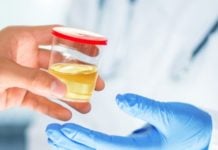Bullous pemphigoid (BP) is a rare but serious skin condition that mostly affects older adults. It causes large, fluid-filled blisters (bullae) that appear mainly on areas like the lower abdomen, groin, and arms. Although it can look alarming, it is not contagious and can be treated effectively with the right medical care.
What Is Bullous Pemphigoid?
Bullous pemphigoid is an autoimmune disorder, which means the body’s immune system normally a defender against infections mistakenly attacks the skin (Schmidt & Zillikens, 2013). In BP, the immune system targets a special area between the top layer of skin (epidermis) and the layer underneath (dermis). This attack causes the skin layers to separate and leads to blister formation.
These blisters are usually tense (meaning they don’t pop easily) and filled with a clear or yellowish fluid. The skin around them might be red or itchy. In some people, itching begins even before any blisters appear, which can sometimes make diagnosis tricky.
Who Gets It and Why?
Bullous pemphigoid is most common in people over the age of 60, although it can very rarely happen in children or younger adults (Genovese et al., 2021). Researchers believe that a mix of genetic and environmental factors triggers the disease, but the exact cause is still unclear. Sometimes, medications such as diuretics, antibiotics, or certain diabetes drugs have been linked to BP (Amber et al., 2018).
There is no strong evidence that BP is inherited, and it doesn’t spread from person to person. It simply happens when the immune system makes a mistake.
Symptoms to Watch For
The main symptom of bullous pemphigoid is the appearance of large, itchy blisters. These usually appear in areas that bend or flex, such as the armpits, thighs, or lower abdomen. Before blisters show up, people often experience intense itching and red or hive-like skin.
Some patients may only have itching without many visible blisters, while others may have widespread skin involvement. In severe cases, the blisters may even appear in the mouth or on other mucous membranes (Schmidt & Zillikens, 2013).
How Is It Diagnosed?
Doctors usually diagnose BP through a combination of physical examination and special tests. A skin biopsy is often done this means taking a tiny sample of skin to look at under a microscope. Doctors may also do a test called direct immunofluorescence, which shows whether immune proteins are present in the skin, helping confirm the diagnosis (Genovese et al., 2021).
Blood tests may also be used to detect certain antibodies that are usually found in people with BP.
Treatment Options
There is no permanent cure for BP, but it can be managed effectively. The main goal is to stop the immune system from attacking the skin. Treatments often include:
- Topical corticosteroids: These are creams or ointments used on the skin to reduce inflammation.
- Oral corticosteroids: Pills like prednisone are often used in more severe cases.
- Immunosuppressive drugs: Medicines like azathioprine or methotrexate help calm the immune system.
- Biologics: In recent years, new treatments such as rituximab a type of antibody therapy have shown promise for tough-to-treat cases (Amber et al., 2018).
Because older adults often have other health conditions, doctors try to balance treatment benefits with possible side effects, especially when using steroids.
Living with Bullous Pemphigoid
Although BP can be distressing, especially because of its appearance and discomfort, most people respond well to treatment. With the right care, symptoms can go into remission for months or even years. Regular follow-ups with a dermatologist are important to track the condition and adjust treatment as needed.
It can also be helpful to wear soft, loose clothing and avoid scratching to prevent skin infections. Emotional support is just as important dealing with a visible skin disease can impact a person’s mental health. Talking with healthcare providers or support groups can make a big difference.
Conclusion
Bullous pemphigoid may be a challenging condition, but it’s not unbeatable. With early diagnosis and proper treatment, many people live full and comfortable lives. The key is recognizing symptoms early, working closely with doctors, and being patient as treatments take effect. Ongoing research continues to bring hope for even better therapies in the future.
References
- Amber, K. T., Hertl, M., & Jedlickova, H. (2018). Recent advances in understanding and managing bullous pemphigoid. F1000Research, 7, 1230. https://doi.org/10.12688/f1000research.15368.1
- Genovese, G., Di Zenzo, G., Cozzani, E., Berti, E., & Marzano, A. V. (2021). New insights into the pathogenesis of bullous pemphigoid: 2021 update. Frontiers in Immunology, 12, 665627. https://doi.org/10.3389/fimmu.2021.665627
- Schmidt, E., & Zillikens, D. (2013). Modern diagnosis of autoimmune blistering skin diseases. Autoimmunity Reviews, 12(3), 482–486. https://doi.org/10.1016/j.autrev.2012.08.018











